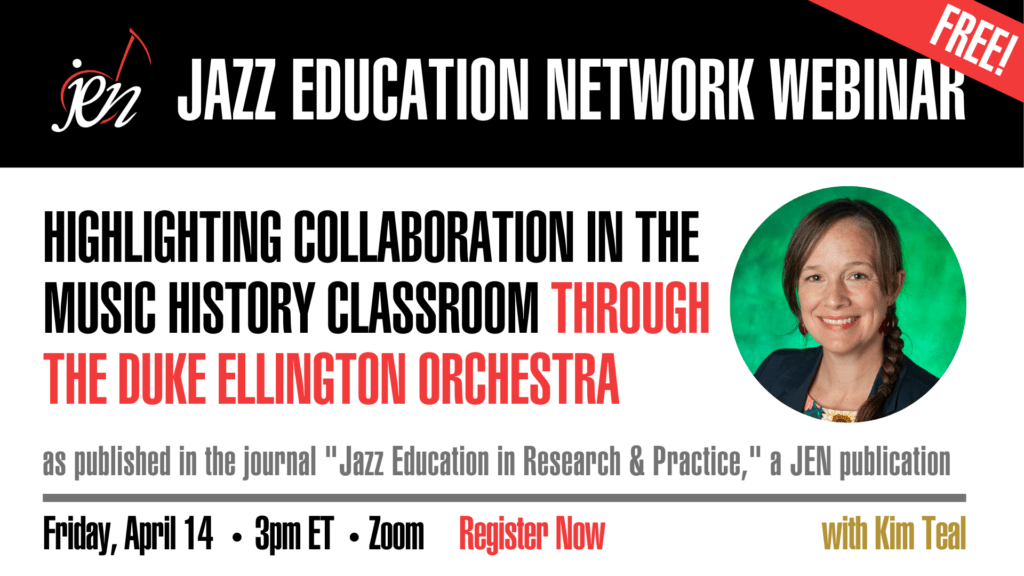In order to strengthen perceptions of jazz as high art, early jazz criticism, and later the young field of jazz studies, often presented Duke Ellington as a remarkably strong individual composer. While this narrative served an important twentieth-century purpose in celebrating his art in particular and the broader arenas of jazz and African American music in a cultural environment that often positioned such music as primitive, unrefined, or overly commercial, it bears revisiting in a twenty-first-century context, especially as it does not easily account for Ellington’s well documented practice of collaborative composition. This project explores how Ellington’s music can can be used to teach jazz history students about the role of community, collaboration, loss, and healing in Ellington’s musical practices through close readings of works as performed before and after the deaths of featured Ellington Orchestra members. It draws on multiple recordings of various solos in reference to the soloists’ written part books housed in the Duke Ellington Collection at the Smithsonian to tease out the relationship between Ellington’s written and sounding music. In this context, Ellington’s reliance on the creativity of others will be revisited as a strength rather than a liability, an aspect of Ellington’s musicianship that allowed him and his orchestra to survive and flourish and one that makes them more human and relatable for contemporary audiences, explaining rather than diminishing the strength that has afforded them a place in the canon.
Plus a Q & A with the live audience.
A presentation from the Jazz Education Research and Practice Journal, a publication of the Jazz Education Network.
CLICK TO REGISTER
This event begins in:
The event will begin streaming below then the timer above reaches 00:00:00.

